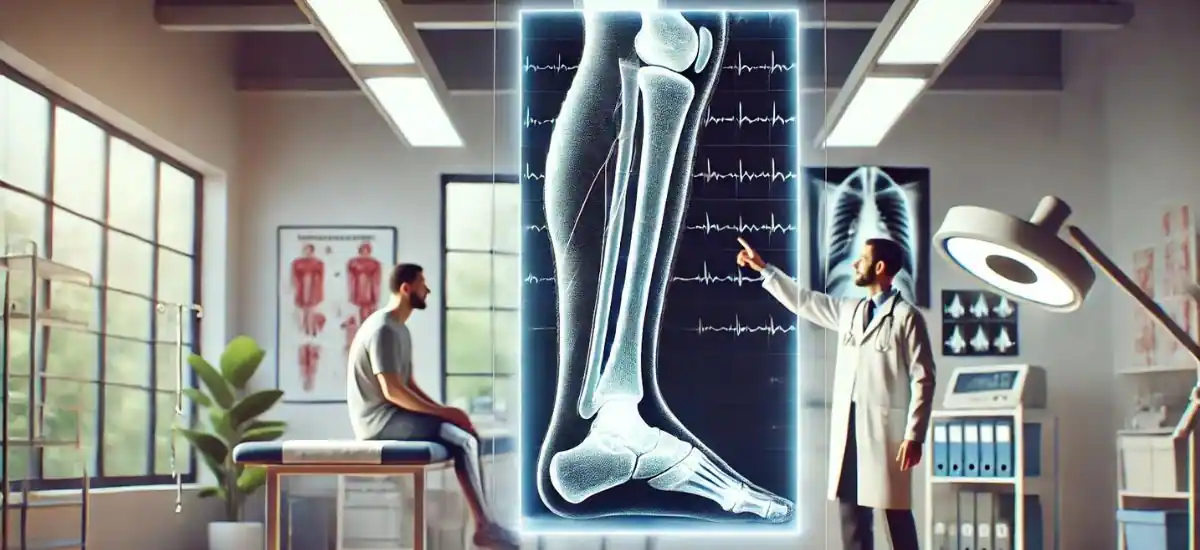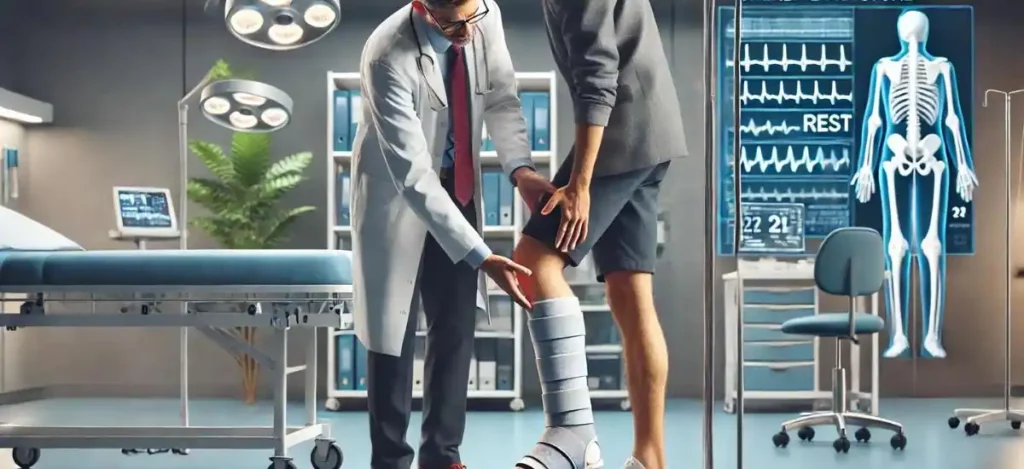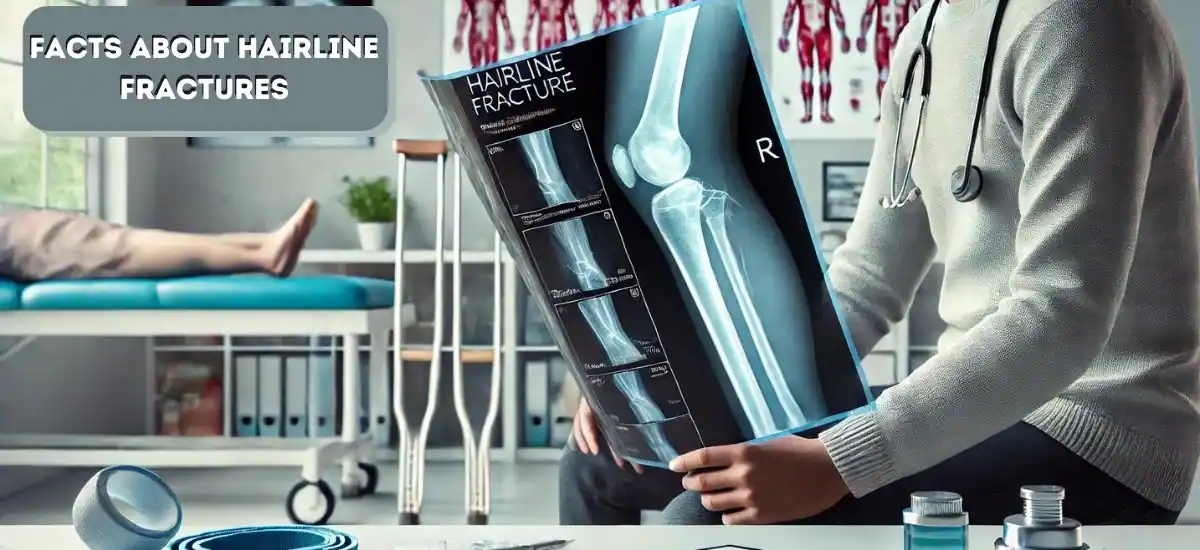Have you ever pushed yourself just a little too hard during a workout or sports activity? If so, you might be familiar with the nagging pain of a hairline fracture, also known as a stress fracture. These injuries are a badge of honor among athletes but can be a real nuisance. They’re especially common in people who are highly active, putting repeated stress on their bones. Understanding what hairline fractures are and recognizing their signs can help keep you in the game and out of the doctor’s office.
What is a Hairline Fracture?

A hairline fracture is a small crack in a bone that often develops from repetitive stress, rather than a single, sudden trauma. Here’s the scoop:
- Difference from Other Fractures: Unlike complete fractures where the bone breaks into two parts, hairline fractures involve a thin crack that is painful but often less visibly dramatic.
- Development Over Time: These fractures typically result from cumulative stress, such as running long distances over time, which overloads the bone’s ability to repair itself.
This gradual onset means that hairline fractures can sneak up on you if you’re not paying attention to the warning signs your body is sending.
Common Causes of Hairline Fractures
Understanding what leads to hairline fractures can help prevent them. Here are the top culprits:
- Overuse in Sports: Athletes participating in sports like running, basketball, or tennis are at higher risk due to the repetitive impact on their feet and legs.
- Insufficient Recovery: Not giving your body enough time to rest and repair between intense workouts can increase the risk of fractures.
- Improper Equipment: Wearing the wrong type of shoes or using outdated gear can fail to provide the necessary support, leading to increased stress on bones.
Symptoms of Hairline Fractures
When dealing with a potential hairline fracture, being aware of the symptoms can help you catch it early. Here’s what to look out for:
- Pain: Initially, it might only occur during activity and lessen with rest, but can become constant over time.
- Swelling: This might be seen around the painful area, especially where the fracture is located.
- Tenderness: The spot directly over the fractured bone is often sensitive to touch.
- Worsening Symptoms: The discomfort typically intensifies with ongoing activity and eases up when you take a break.
Recognizing these symptoms early is your best bet for a quick and smooth recovery, so don’t brush them off as just another soreness from your workouts.
Diagnosing Hairline Fractures
If you suspect a hairline fracture, getting an accurate diagnosis is crucial. Here’s what the diagnostic process generally involves:
- Medical Imaging:
- X-rays: Often the first step in imaging, though hairline fractures can sometimes be too subtle to detect in early stages.
- MRI: Offers a more detailed image of bone and soft tissues, making it excellent for spotting early signs of stress fractures.
- Bone Scan: Sometimes used when other imaging tests are inconclusive, involving a small amount of radioactive material injected to highlight bone changes.
- Physical Examination: A thorough physical exam by a healthcare provider will help determine if your symptoms align with those of a hairline fracture, and whether further tests are needed.
This combination of detailed imaging and professional evaluation ensures that your symptoms are not overlooked and that you receive the appropriate treatment.
Treatment Options

Once a hairline fracture is diagnosed, treatment can begin. The goal is to relieve pain and allow the bone to heal properly. Here’s how it’s usually managed:
- Rest and Recovery: This is the cornerstone of treating hairline fractures. You’ll need to give your body time to heal, which might mean cutting back on activities that put stress on the injured area.
- Medication and Pain Management: Over-the-counter pain relievers can help manage discomfort but should be used cautiously and under medical advice to avoid masking symptoms.
- Rehabilitation Exercises: Once healing has progressed, specific exercises might be recommended to strengthen the area and prevent future injuries.
Prevention Strategies
Preventing hairline fractures begins with understanding the risks and implementing strategies to mitigate them. Here’s how you can keep your bones healthy and reduce the likelihood of fractures:
- Proper Training Techniques: Gradually increase the intensity of your workouts to give your bones time to adapt. Overloading too quickly is a common pitfall.
- Adequate Equipment: Invest in high-quality, activity-appropriate footwear that provides good support and cushioning. This is particularly important for impact sports.
- Cross-Training: Incorporate lower-impact activities, like swimming or cycling, into your routine to reduce the stress on your bones while still maintaining fitness.
- Nutrition: Ensure your diet includes sufficient calcium and vitamin D, which are essential for bone health. Consider speaking with a nutritionist to tailor your diet to your specific needs.
By incorporating these preventative measures, you can help keep your bones strong and resilient, warding off the potential for hairline fractures.
Long-Term Management and Recovery
The road to recovery from a hairline fracture can vary based on the severity and location of the fracture, but here’s a general idea of what to expect:
- Recovery Timeline: Most hairline fractures heal within 6 to 8 weeks with proper rest and treatment. However, it may take longer depending on the individual’s overall health and the bone affected.
- Physical Therapy: Engaging in physical therapy once the fracture has sufficiently healed can help restore strength and flexibility.
- Monitoring for Complications: Be vigilant for signs of complications, such as persistent pain or changes in mobility, which could indicate poor healing or other issues.
Understanding the recovery process and following your healthcare provider’s recommendations are crucial for a full return to health.
When to Seek Medical Advice
If you’re experiencing persistent pain, swelling, or discomfort that doesn’t improve with rest, it’s essential to consult a healthcare professional. Here are a few signs that you should seek medical advice:
- Persistent Symptoms: If pain and swelling don’t decrease after a few days of rest.
- Increased Pain: If the pain worsens or doesn’t respond to over-the-counter pain relievers.
- Functional Impairment: If you’re unable to bear weight or perform daily activities without pain.
Frequently Asked Questions
Q1. What is the difference between a hairline fracture and a regular fracture?
Ans: A hairline fracture involves a thin crack in the bone and is often caused by repetitive stress, while a regular fracture usually results from a single, more significant impact that breaks the bone completely or into pieces.
Q2. How long does it typically take to recover from a hairline fracture?
Ans: Recovery can vary but typically takes 6 to 8 weeks, depending on the location of the fracture, the severity, and the individual’s overall health and compliance with treatment recommendations.
Q3. Can I continue to exercise if I have a hairline fracture?
Ans: It’s essential to rest the affected area until it heals. Continuing to stress a fractured bone can lead to worse injuries. Consult with a healthcare provider to develop a safe, modified exercise plan if necessary.
Q4. What are the best foods to eat for bone health to prevent hairline fractures?
Ans: Foods rich in calcium, vitamin D, and other minerals like magnesium and phosphorus are vital for bone health. Dairy products, green leafy vegetables, nuts, and fortified foods contribute to stronger bones and can help prevent fractures.
Conclusion
Understanding the facts about hairline fractures is crucial for anyone active in sports or engaging in regular physical activity. By recognizing the signs early, implementing effective prevention strategies, and adhering to recommended treatment protocols, you can manage and recover from hairline fractures effectively. Always prioritize your bone health and consult healthcare professionals when symptoms persist or worsen. Remember, taking care of your body today ensures strength and resilience for tomorrow.


